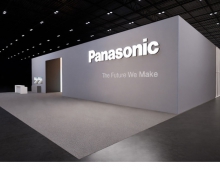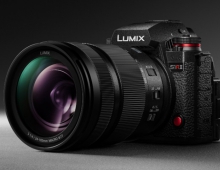
Panasonic Raises Profit Outlook
It seems that Panasonic's restruction plan is showing results, as the Japanese company on Friday raised its full-year operating profit outlook by 13 percent and returned to a net cash positive position for the first time in five years.
Panasonic is expecting a 350 billion yen ($3.15 billion) operating profit for the year to next March, compared with its prior estimate of 310 billion yen issued in July. The revised forecast is reflecting profit increase from favorable sales in solar business in Eco Solutions (housing solar business and LED lighting business.)
The Japanese electronics maker also logged a 15 percent rise in operating profit for the July-September quarter to 94.7 billion yen, due mainly to fixed cost reduction.
Consolidated Panasonic group sales for the second quarter decreased by 1%. Despite sales increase in solar and automotive businesses, this was mainly due to sales decrease of challenging businesses such as TVs, and sluggish demand in Japan after the consumption tax hike in April.
Panasonic is targeting growth in businesses supplying industrial customers, especially in the auto sector, after racking up huge losses on its consumer electronics business in recent years. As part of its restruction plan, the Japanese company had chopped unprofitable product lines in smartphones, plasma TVs and semiconductor chips.
The company is also aiming for a record 10 trillion yen in revenue in 2018/19, with 2 trillion yen coming from the automotive business. It is targeting 7.75 trillion yen in total revenue for the current year.
Chief Executive Kazuhiro Tsuga told an earnings briefing that Panasonic would need to find a partner to break into the first tier of global automotive suppliers.
"We have to choose a partner very carefully," he said. "If we don't have a partner I think it will be hard to get into Tier 1."
Profit in its auto segment, which supplies lithium-ion batteries to U.S.-based electric car maker Tesla Motors, climbed 31 percent in the latest quarter.
The Japanese electronics maker also logged a 15 percent rise in operating profit for the July-September quarter to 94.7 billion yen, due mainly to fixed cost reduction.
Consolidated Panasonic group sales for the second quarter decreased by 1%. Despite sales increase in solar and automotive businesses, this was mainly due to sales decrease of challenging businesses such as TVs, and sluggish demand in Japan after the consumption tax hike in April.
Panasonic is targeting growth in businesses supplying industrial customers, especially in the auto sector, after racking up huge losses on its consumer electronics business in recent years. As part of its restruction plan, the Japanese company had chopped unprofitable product lines in smartphones, plasma TVs and semiconductor chips.
The company is also aiming for a record 10 trillion yen in revenue in 2018/19, with 2 trillion yen coming from the automotive business. It is targeting 7.75 trillion yen in total revenue for the current year.
Chief Executive Kazuhiro Tsuga told an earnings briefing that Panasonic would need to find a partner to break into the first tier of global automotive suppliers.
"We have to choose a partner very carefully," he said. "If we don't have a partner I think it will be hard to get into Tier 1."
Profit in its auto segment, which supplies lithium-ion batteries to U.S.-based electric car maker Tesla Motors, climbed 31 percent in the latest quarter.





















